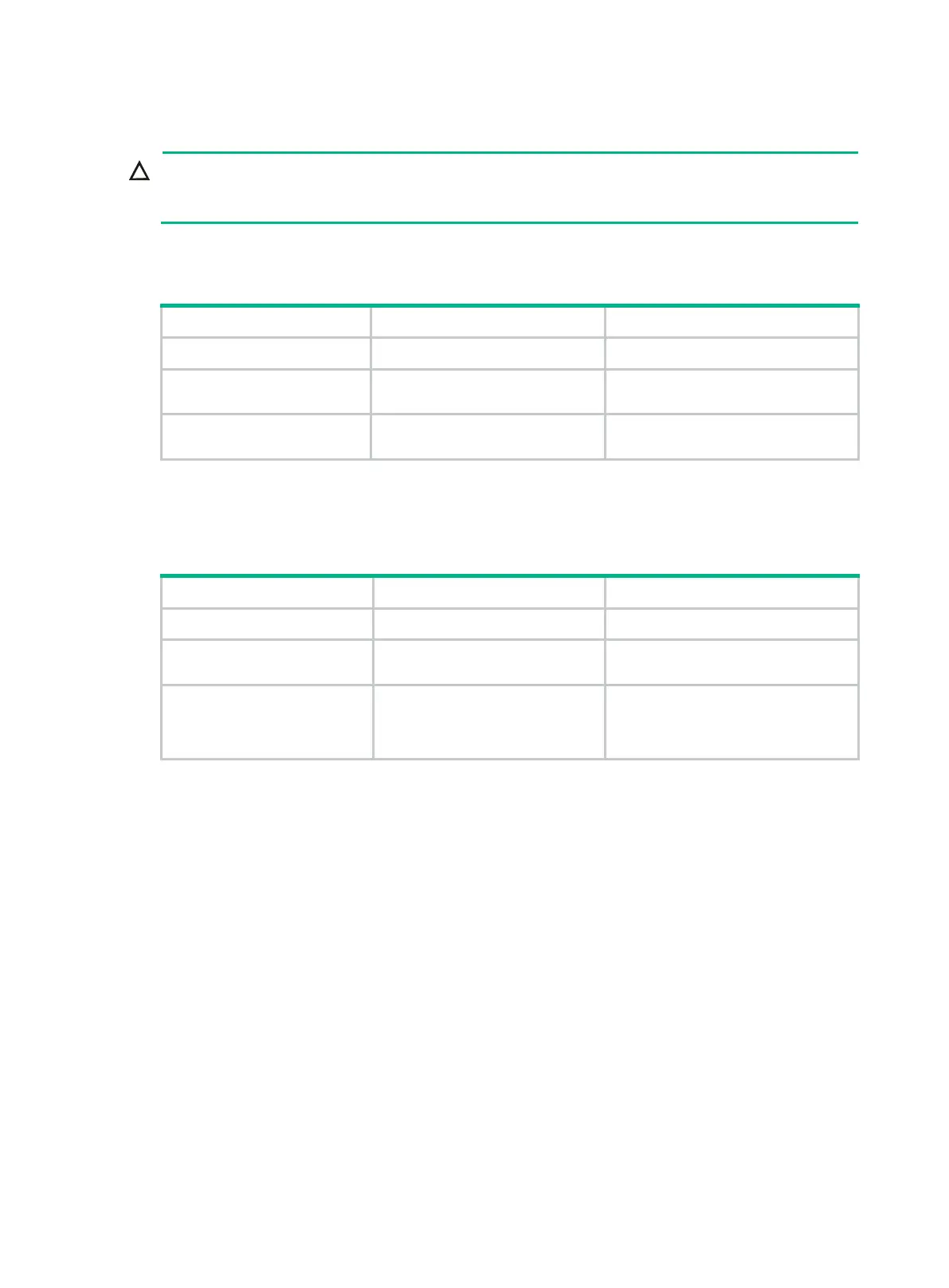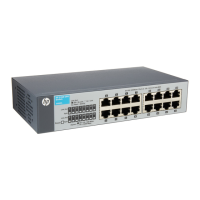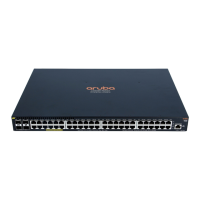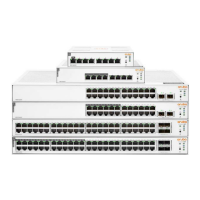279
Enabling per-prefix label allocation
A change to the label allocation mode enables BGP to re
-advertise all routes, which will cause
service interruption. Use this command with caution.
Perform this task to enable BGP to allocate a label to each route prefix.
To enable per-prefix label allocation:
1. Enter system view.
system-view
N/A
2. Enter BGP instance view.
bgp
as-number [
instance
instance-name ]
N/A
3. Enable per-prefix label
allocation.
label-allocation-mode
per-prefix
By default, BGP allocates labels on a
per-next-hop basis.
Disabling optimal route selection for labeled routes without
tunnel information
1. Enter system view.
system-view
N/A
2. Enter BGP instance view.
bgp
as-number [
instance
instance-name ]
N/A
3. Disable optimal route
selection for labeled
routes without tunnel
information.
labeled-route ignore-no-tunnel
By default, labeled routes without
tunnel information can participate in
optimal route selection.
Configuring a large-scale BGP network
In a large network, the number of BGP connections is huge and BGP configuration and maintenance
are complicated. To simply BGP configuration, you can use the peer group, community, route
reflector, and confederation features as needed. For more information about configuring peer
groups, see "Configuring a BGP peer group."
Configuring BGP communities
By default, a router does not advertise the COMMUNITY or extended community attribute to its
peers or peer groups. When the router receives a route carrying the COMMUNITY or extended
community attribute, it removes the attribute before advertising the route to other peers or peer
groups.
Perform this task to enable a router to advertise the COMMUNITY or extended community attribute
to its peers for route filtering and control. You can also use a routing policy to add or modify the
COMMUNITY or extended community attribute for specific routes. For more information about
routing policy, see "Configuring routing policies."
To configure BGP communities (IPv4 unicast/multicast address family):

